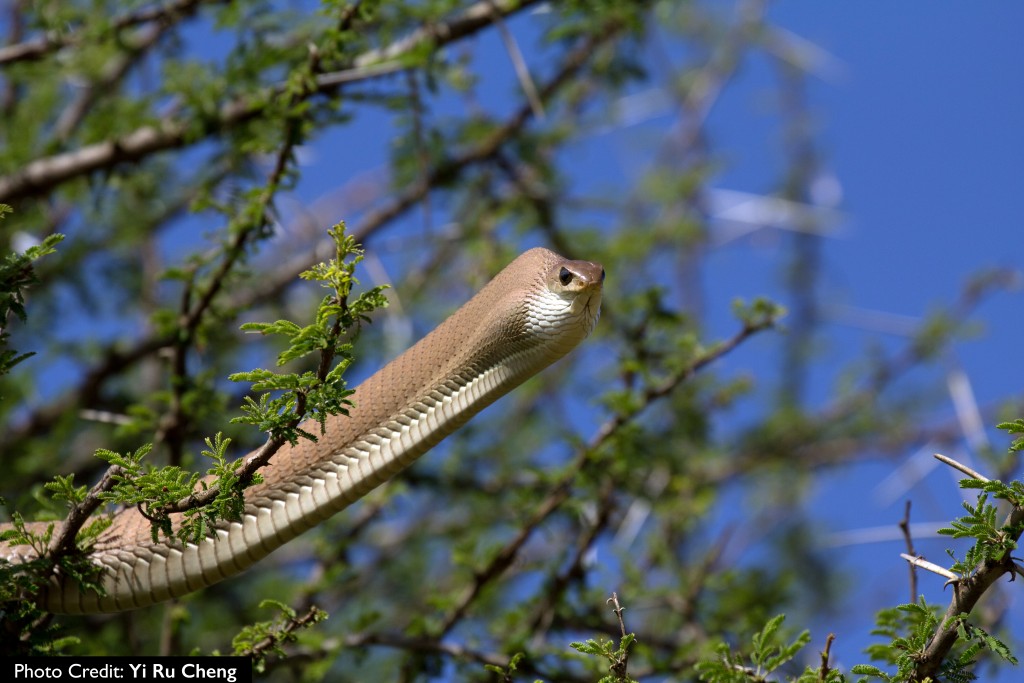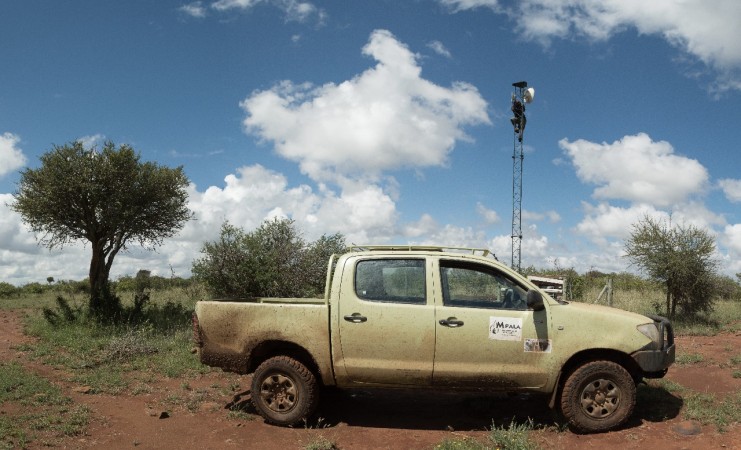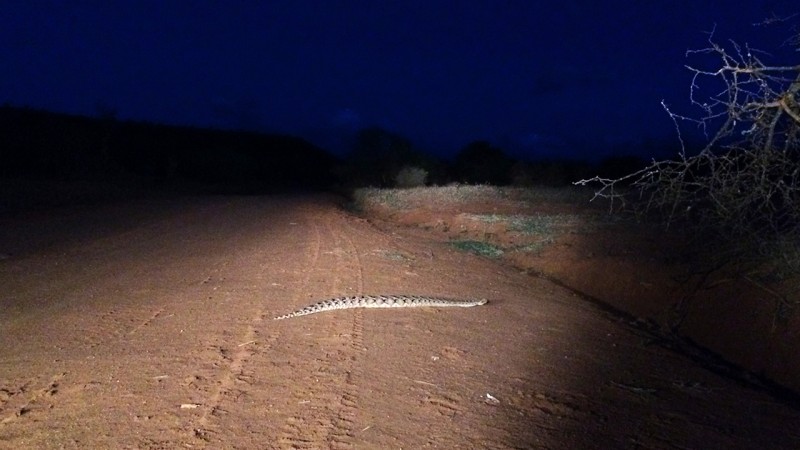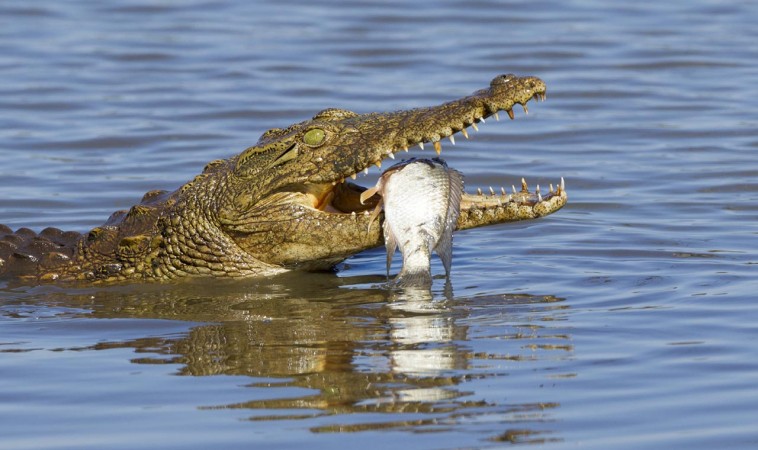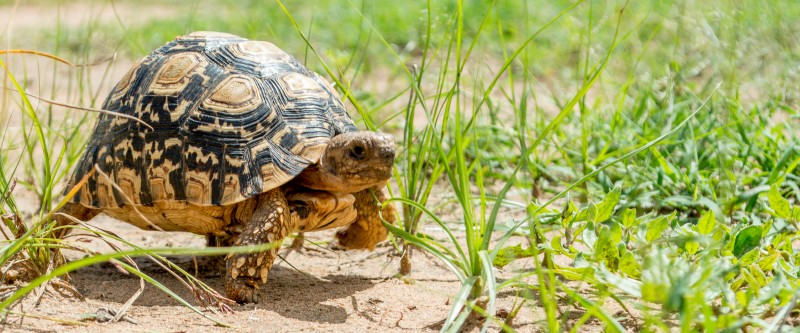Routine checks that include clearing underbrush and troubleshooting installations and equipment on the Explore.org cameras at Mpala took on a chilling character when a bright green snake was seen on the live cams. The agile serpent was recorded weaving its way up one of the camera masts at the hippo pool. It was initially recognized as the deadly and highly venomous green mamba. Much to the relief of intrepid resident IT engineer, George Mwangi, the snake had been mistakenly identified.
Most snake species are shy and rarely have viewers on Explore.org seen any on our live cams. This sighting made waves, both online and at Mpala. It was later correctly identified by Dr. Dino, Mpala’s exec. director, as a harmless non-venomous Battersby green snake, “Battersby’s green snake (Philothamnus battersbyi) is a common and widespread snake that is active by day and loves climbing trees, or the live cam tower in this case.”
One of the researchers at Mpala, Yi Ru Cheng of Columbia University, has had numerous encounters with snakes that raid bird nests for food. During her studies on the grey-capped social weaver colonies, she sought to document this and set up infrared camera traps. One of the most notorious nest raiders is the boomslang, whose diet includes frogs, lizards, chameleons, rodents, birds, and eggs from nesting birds, all of which they swallow whole. Although the boomslang is an extremely dangerous and venomous snake species, it is not aggressive and will avoid confrontation with any animal bigger than itself. Other likely snake encounters in Laikipia may include pythons, cobras and the puff adder.
Back at Mpala’s hippo pool, another reptile to watch out for is the Nile crocodile. This is the largest freshwater predator in Africa. It is not clear how many there are at Mpala but at periodic intervals over the years, one individual has been seen patrolling edges of the hippo pool. The Nile crocodile mainly feeds on fish but will attack nearly any animal within easy reach including zebras, gazelles and animals seeking to cross or drink from the rivers. Kenya’s longest river rising from the central highlands and draining into the Indian ocean is feared for the many reported human deaths from crocodile attacks. The 620 mile (1000km) long river is a lifeline for many human settlements that depend on it. At times, women and children fetching water or crossing the crocodile-infested waters fall victim to attacks. This human-wildlife conflict has in the past escalated leading to mass poisoning of crocodiles.
Known as mamba in Swahili, crocodiles are some of the few wild animals in Kenya reared in farms. At the Nairobi and Mombasa Mamba Village Resorts, tourists, school groups and the public learn all about this fearsome and aggressive reptile that can grow to 16 ft (4.8 m) long and weigh up to 2,200 lb (1,000kg). They are also social animals and attentive mothers, carrying hatchlings in their mouths and protecting them for several months.
Mpala is home to many other reptile species. One of our frequent visitors both on the live cams and at the Mpala office compound is the Leopard tortoise. This species is a strict herbivore and will be seen eating grass, though they prefer to graze on flowers, succulents, fungi, berries, and other fruit. Occasionally they will eat old bones or ash, possibly to supplement their calcium levels.
For most people, many reptile species are creepy and scary. However, for the team at Mpala Live!, Anne, Evelyn and Fred, these animals are fascinating, intriguing and the opportunity to zoom in for a close-up is always welcome.
Peace,
Victor Kasii @mpalalive
